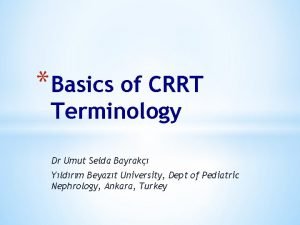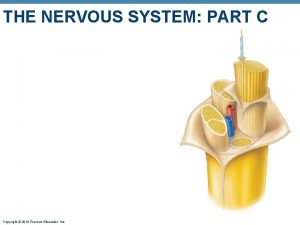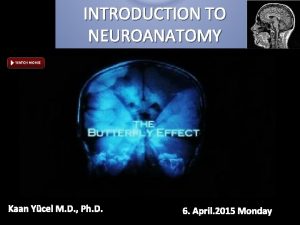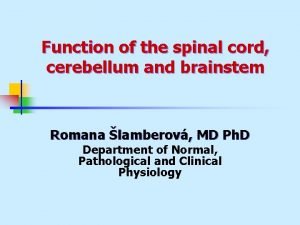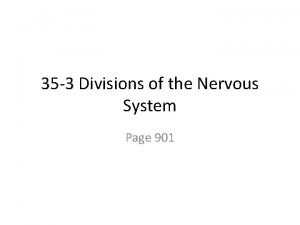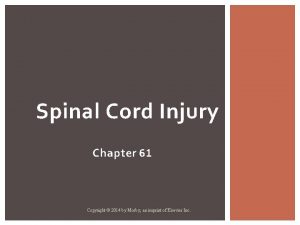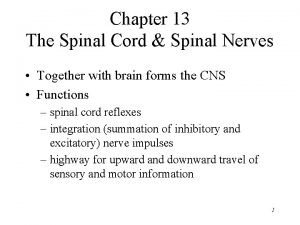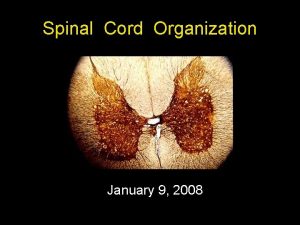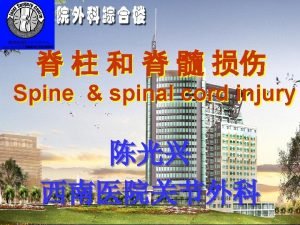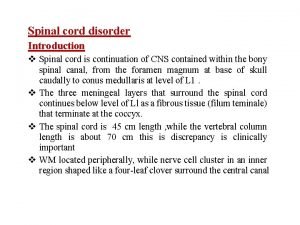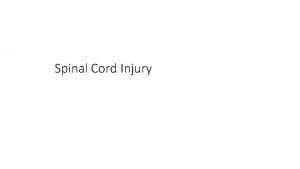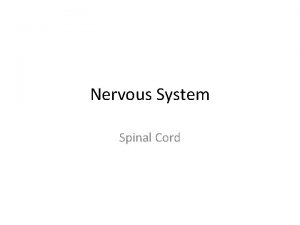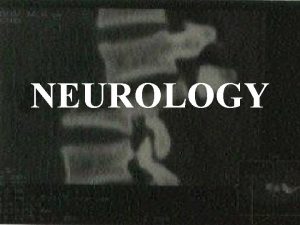PATHWAYS OF THE SPINAL CORD Prof Dr Selda














- Slides: 14

PATHWAYS OF THE SPINAL CORD Prof. Dr. Selda Önderoğlu Dept. Of Anatomy

Sensory and motor neurons carry information to and from the CNS all the time. Sensory and motor axons run in their individual pathways/tracts within the spinal cord Ascending tracts relay SENSORY information to the brain Descending tracts relay MOTOR information down to the spinal cord and periphery (Hint: Tract names starting with spino>sensory; tract names ending with spinal>motor) 2

n n n Fiber bundles having the same origin, course and termination are known as tracts or fasciculi. They may be short or long tracts. A funiculus may contain several different tracts conducting impulses in different directions means ascending and descending.

ASCENDING PATHWAYS

Components of a Somatic Sensory system Provides Conscious perception of stimulus Neuron in primary sensory cortex Third-order neuron in thalamus Second-order neuron in spinal cord First-order neuron in dorsal root gang. Dorsal root of a spinal nerve Stimulus Detected by receptors

n n n Ascending tracts not only convey impulses concerned with specific sensory modalities (taste, vision) that reach levels of consciousness, but they also transmit impulses from muscles, joints, skin (stretch receptors and tactile receptors) that project to the cerebellum which are not concerned with conscious sensory perception. Ascending impulses projected to the cerebellum are considered to be concerned with the regulation of muscle tone and with the coordination of motor function. Dorsal root (of a spinal nerve) afferents entering the spinal cord convey impulses from all general types of somatic and visceral receptors.

POSTERIOR WHITE COLUMNS (crossed) n FASCICULUS GRACILIS n FASCICULUS CUNEATUS n n n These tracts convey tactile impulses for exact localization and two point discrimination. Impulses from receptors on joint capsules, which are excited by movement, convey information concerning the position of different parts of the body. Vibration

n n The fasciculus gracilis is present at all spinal levels and related to lower extremity +lower parts of the body; The fasciculus cuneatus appears is related to upper extremity. Fibers in these fasciculi ascend ipsilaterally and terminate upon the nucleus gracilis and cuneate nucleus. These nuclei give rise to second order fibers called the internal arcuate fibers, which decussate at the lemniscal decussation and continue as the medial lemniscus. Fibers of the ML terminate in the VPL of the thalamus. From here these fibers are relayed to area 3, 1, 2 of Brodmann.


ANTERIOR SPINOTHALAMIC TRACT(crossed) (touch&pressure) n n n Dorsal rootganglion )neuron I) spinal cord(II) Fibers of this tract cross in the anterior white commissure and ascend in the anterior funiculus. On reaching brainstem levels its fibers join the medial lemniscus and relay to the VPL(III). Brodmann 3, 1, 2 (center)

LATERAL SPINOTHALAMIC TRACT(crossed) pain, thermal sense n n n Dorsal root ganglion (I) Cells in spinal cord gray matter (II). Axons arising from spinal cord cross in the anterior white commissure ascend in the contralateral funiculus as the lateral spinothalamic tract. fibers terminate in the VPL of the thalamus (III). Reach Brodmann areas 3, 1, 2 ( sensory cortexcenter)


The tracts that carry unconscious proprioceptive information are collectively known as the spinocerebellar tracts. Although we cannot physically acknowledge these signals, they help our brain co-ordinate and refine motor movements. They transmit information from muscles to the cerebellum. Posterior spinocerebellar tract – Carries proprioceptive information from the lower limbs to the ipsilateral cerebellum. Cuneocerebellar tract – Carries proprioceptive information from the upper limbs to the ipsilateral cerebellum. Anterior spinocerebellar tract – Carries proprioceptive information from the lower limbs. The fibres decussate twice – and so terminate in the ipsilateral cerebellum. 13

DORSAL(POST) SPINOCEREBELLAR TRACT n n It is uncrossed. It arises from the dorsal nucleus of Clarke (C 8 -L 2 or L 3). In the medulla oblongata, fibers of this tract join the inferior cerebellar peduncle, enter the cerebellum and end in vermis.
 Spinal cord layers
Spinal cord layers On occasion our trusty truck
On occasion our trusty truck Epineurium
Epineurium Lateral pectoral nerve
Lateral pectoral nerve Diapact crrt
Diapact crrt Selda kavak
Selda kavak Spinal cord diagram
Spinal cord diagram Ventral root and dorsal root
Ventral root and dorsal root Pain pathway spinal cord
Pain pathway spinal cord Vestibulocerebellum
Vestibulocerebellum Spinal cord and brain
Spinal cord and brain Poikilothermism and spinal cord injury
Poikilothermism and spinal cord injury Trachea and spinal cord
Trachea and spinal cord External anatomy of spinal cord
External anatomy of spinal cord Anterior median fissure
Anterior median fissure




